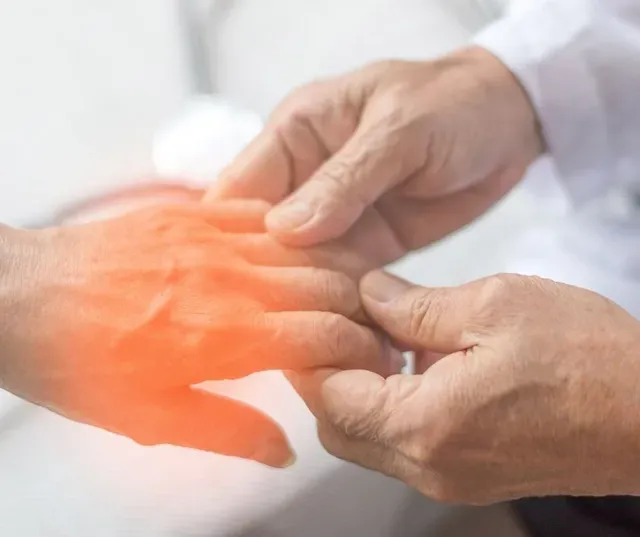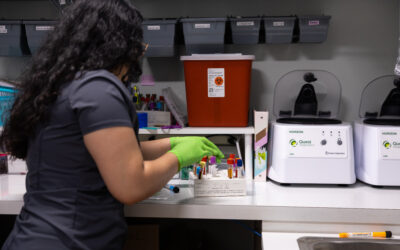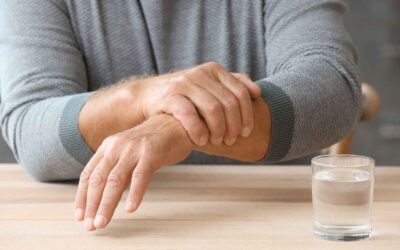As we age, it’s only natural that some of the vital body processes will start to slow down and become altered. When the body’s nerves age or are damaged they can become more painful and sensitive, but transmit messages to and from the brain more slowly, a condition known as neuropathy.
The symptoms vary from patient to patient, but the good news is that pain from nerve damage can be maintained and nerves repaired by multiple remedies such as regenerative and integrative therapy. In this guide, we will help you understand this health condition better and show you how you can relieve its effects with regenerative medicine. Keep reading.
So What Happens When A Nerve Gets Damaged?
The peripheral nerves connect the nerves from the central nervous systems (brain and spinal cord) to the other parts of the body.
When a peripheral nerve becomes damaged or destroyed, it starts to act unpredictably responding to normal pressure with pain and releasing chemicals into the area of injury that creates more swelling and inflammation.
Most importantly, there’s almost always scarring around the nerve that cuts off its circulation and creates further restrictions to the nerve’s motion. When scar tissue develops, it prevents the body’s ability to repair the nerve, causing the condition to become chronic.
When these nerves get damaged, they may send pain signals to your central nervous systems when you have not been hurt or even fail to send the pain signals when you are hurt. The main signs and symptoms of nerve damage include:
- Gradual pain, swelling, tingling, or numbness in the injured area
- Pain on activities that shouldn’t arouse pain or less pain on the painful experiences
- Muscle weakness or paralysis- happens when the motor nerves are affected
- Poor body coordination
The leading causes of nerve damage include trauma, accidental injuries from medical procedures, and occasionally viral infections.
How Regenerative Medicine Can Help To Manage and Repair Nerve Injury
Over the years, health experts have realized that the body can heal itself, and this realization has led to the introduction of regenerative therapy.
Regenerative medicine is a modern non-operative treatment solution that utilizes the body’s ability to heal itself. It targets the underlying source of pain without relying on any surgery or drugs. When done well by an expert, regenerative therapy results in an effective recovery and increased mobility within a short period.
When it comes to management, most of the regenerative treatments are combined with hydrodissection.
Hydrodissection is a minimally invasive technique of using a needle under ultrasound guidance to gently use the pressure of the solution injected to break up the scar tissue surrounding the treated nerve.
Three main types of regenerative therapy solutions are used:
- Stem cell therapy
- Placenta Matrix
- Prolo and peptide therapy
Here is a detailed description of these three practices and how they can help to manage neuropathy.
Stem Cell Therapy
Stem cells are special types of human cells with the ability to develop into different cell types. Stem cells are beneficial to nerve injury patients because of their ability to take many forms.
The best type of stem cells for nerve regeneration are derived from human fat. Our fat contains a high amount of active stem cells.
The health expert injects stem cells under ultrasound guidance into the area where the nerves are most damaged/ injured. When the fat is injected serves multiple functions. The thick nature of the fat forces a doctor to inject it with a high amount of pressure which effectively breaks up surrounding scar tissue, the fat then surrounds the nerve insulating it from further pressure and friction until is slowly dissolved. It then releases stem cells that proceed to repair the nerve.
The nerves that are best treated by this method are of a larger caliber, such as a sciatic nerve or a brachial plexus.
If you suffer from peripheral nerve damage and your doctor recommends a stem cell injection, your traumatized nerves have a good chance of repairing in less than 12 weeks, depending on the type of injury. Frequently several follow-up treatments with less potent regenerative treatments listed below may be needed for optimal healing.
Placenta Matrix Hydrodissection Therapy
Placenta Matrix is a purified concentrate of a placenta lining. It is known that the placenta contains growth factors needed to support life for nine months. It has a potent ability to stimulate repair and reduce inflammation. It has the unique feature of being able to stick to and coat the injured nerve. This allows for a longer healing time window.
This solution is also injected around the injured nerves under ultrasound guidance with a hydrodissection technique.
Smaller nerves of the arms, legs, hands, and feet are great candidates for this procedure. Typically several treatments are needed for optimal healing.
Prolozone and Peptide Therapy
Prolotherapy is a type of injection containing an irritant, such as the dextrose solution. It is a non-invasive process whereby the natural irritant is injected directly into the soft tissues of the affected area.
Ozone is an unstable gas that when injected around a nerve, converts to peroxide that reduces inflammation and increases oxygenation.
When prolotherapy and ozone are combined, the injection solution is called prolozone.
Peptides are naturally occurring small molecules that enhance signaling between injured and healthy cells, promoting repair. Specific peptides such as BPC, Thymosin Alpha, and Thymosin Beta have been shown to promote tissue healing in general and nerve repair in particular.
At OWM Integrative Wellness Medicine, Dr. Kaplan combines prolotherapy, ozone, and peptides into one powerful healing cocktail for repairing injured nerves. Smaller nerves in the arms, legs, hands, feet, and groin region are great candidates for this procedure. All injections are performed under ultrasound visualization and guidance.
This therapy requires multiple sessions for one to heal effectively. You can expect at least four weekly sessions and more if there is partial healing seen. This is a natural permanent solution to nerve injury. It reduces pain, strengthens the weak nerves, and breaks up surrounding scar tissue.
Enjoy the Benefits of Regenerative Therapy
Regenerative therapy reduces your pain, enables you to avoid surgery, and promises a fast natural healing process. With its amazing benefits, it could be the right time to consider it to reduce pain and support your health and wellness.





